Thanks to a Facebook group and a friend, conversations around visualizing the apple have grabbed my attention lately. My brain works differently than others, though. I don’t really see things in my head. But when I saw the responses to the apple conversation, I felt really validated and had some profound realizations. In this episode, I talk about those realizations, what this means for art teachers, and how we can better serve diverse learning types among our students.
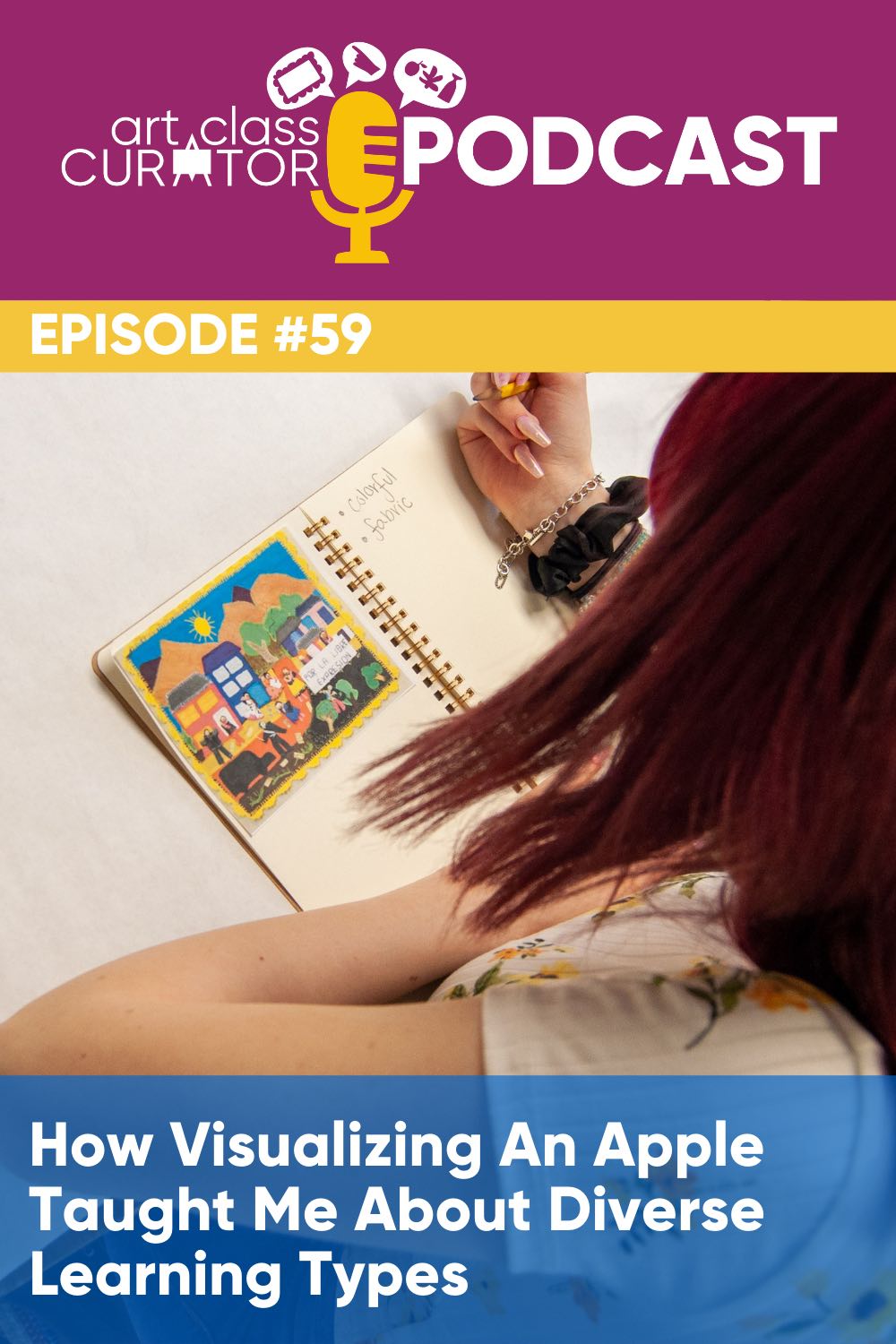
5:46 – The judgment I’ve made about myself for my entire life
7:58 – Limited diverse learning types and how I “visualize” things
11:29 – The impact of learning differences on the way you teach
14:36 – Strategies to address differences and accommodate diverse learners
22:53 – The disservice done to us while learning art history in college
- Middle School Art Teachers Facebook group post
- Art Class Curator Curriculum
- Curated Connections Library
- Art Appreciation Printable Worksheet Bundle
Hello and welcome to The Art Class Curator Podcast. I am Cindy Ingram your host and the founder of Art Class Curator and the Curated Connections Library. We’re here to talk about teaching art with purpose and inspiration from the daily delight to creativity to the messy mishaps that come with being a teacher. Whether you’re driving home from school or cleaning up your classroom for the 15th time today take a second, take a deep breath, relax those shoulders and let’s get started.
Hello, everybody. This is Cindy Ingram from Art Class Curator, and I am happy to be with you today because something on the internet is blowing my mind as usual. There’s always something that’s blowing my mind on the internet but the current thing that I have gotten myself all enraptured in is this conversation about visualizing the apple. I don’t know if you’ve seen this it was in the Elementary Art Teachers Facebook group I think and I also heard about it from another friend too and basically what it is is it has five apples and it has them varying from being a full realistic apple down to nothing. Actually, there’s four apples because the number five is blank. The post says to close your eyes and imagine an apple, what do you see? And then it gives th ose apples. What I want you to do now is to imagine an apple in your head. Of course, if you’re driving don’t close your eyes but what was fascinating to me when I saw this is I always kind of knew that what happens in my brain is different than what happens in other people’s brains obviously.
My husband and I had this grand conversation one time because he can remember movie quotes and pull any storyline, any movie quote from anything he’s ever seen and he can remember it and it just blows my mind. And so I asked him one time he had responded with some sort of Star Wars quote and I was like, “What happened in your head when you did that? How did that happen? How did you get that information? Because I can’t do that. I can’t pull movie quotes out of nowhere only if I’ve seen the movie tons of times. Can that really happen?” And so he explained it to me and he said, “I see the character saying it but then…” It was a Jar Jar Binks quote and he was like… And then when he got to this Misa Misa part which Jar Jar Binks talks like that, he actually saw the letters Misa Misa in his brain and I was blown away by that because I don’t see much in my brain. I don’t visualize things. And so when this apple post started going around it became really clear that I don’t think the apple post is correct because every answer I’ve seen people are either saying they’re one or there are five.
People are not saying there are twos, threes and fours. They either see an apple or they don’t see an apple. And I’m sure there’s a very big variations in this but not a lot of people are saying they see like the washed out version of the apple which is what it has on the picture. And I just felt really suddenly validated for the first time in my life that I had some really profound realization so I’m going to tell you about those and then kind of talk about what this means for art teachers. Split in the comments of this Facebook post, I said earlier it was Elementary Art Teachers group. I went and double checked the section at the Middle School Art Teachers group but half of the people were saying, “Yeah I can see an apple. You can’t say the apple?”
And then the other people were like, “No, I don’t see things in my head do you see things in your head?” And on both sides people are like, “How is this possible that I can see the apple so clearly and you don’t see anything.” And then the other way around. And so like when I try to envision the apple I can get it visualized for just a second but it won’t stay. I can’t visualize anything for a second but if I envision biting into the apple or holding the apple and feeling the cold of the apple like that I can keep in my head, I can feel the apple, I can experience the apple in my brain but I can’t see the apple in my brain and then… I went on a Facebook… No. I went on a Google wormhole about this. You should see my Google searches I couldn’t figure out exactly how to search for this but I was like, “I need more information.”
And then in that post I realized there’s something called… I think it’s called aphantasia and I hope I’m saying that right but there’re people who just can’t visualize. And I don’t think I’m that I don’t think… I can visualize experience especially, I can visualize feelings not visualize but I can… I don’t know what the right word is, imagine. But when it comes to seeing things it’s just not… I can’t just keep it in my head very much but when I read I can visualize the surroundings. I don’t think I fully have this disorder or whatever.
Anyway I was on the page for this disorder it was a Reddit thread and it said… One person said and if she can see vivid in her brain like full scenes and someone was like, “I can see the Gala apple and a forest and they can see all the lush surroundings.” And all this stuff. But then this person was like, “But if I try to visualize movements…” The example in the Reddit thread was the feeling of jumping downstairs or jumping off of a curb or something and experiencing or imagining what that would feel like. This person couldn’t do that at all she was like she said she tried and tried and tried and could not imagine that. She couldn’t imagine what her muscles felt like or what her body felt like you did that. And so these are profound differences in how we experience the world and the thing that blew me away so much and that validated me so much is that I’ve realized my entire life, I’m about to turn 40 in about a month, I’ve had this sort of self judgment that I couldn’t draw from memory that I couldn’t draw from imagination.
I would see people in my art classes just be able to… They are like, “Draw an alligator.” And they’re just draw an alligator and I’m like, “How did you do that? I can’t do that.” And so I always thought I’m not that good of an artist I just can’t do it but if you put a picture of an alligator in front of me I can draw that thing perfectly. I can draw it really well if I’m looking at something but I just can’t pull it from my imagination and so I always thought I was broken. And then I realized, no it’s because they see things in their head so they are looking at a picture. They’re seeing it. They can see the details. I can’t get that in my head. I can’t visualize that and if I do visualize it’s very brief it’s not specific.
And so for the first time in my 40 years I understand why I can’t draw from imagination. It’s no fault of my own it’s no lack of talent or anything it’s just that my brain works differently. And then the other teachers those that could visualize it can’t imagine someone not visualizing it so you think of that being my teacher we have a profound difference in how we view the world and that’s going to impact the way you teach me. If you’re assuming all this time that I should be able to see things in my head and I can’t we’re going to have a disconnect and the other way round. If I’m teaching someone who can see things in their head we’re going to have a disconnect. I think this is such a powerful reminder that we need to make sure that we are aware of how we’re communicating with our students and how we might be having the sort of unconscious or hidden ways that we see the world that are hindering our teaching.
Because I think back and I’m like, “I should’ve known this. How did I make it this long without knowing this?” And we hear a lot about the different types of learners. The auditory learners, the kinesthetic learners, the visual learners. I think that I saw a list on the internet the other day on my rabbit hole that there were many, many more those aren’t just the three but they’re the ones we mention the most. But I think that even that is limited because I was kind of… You’re going to hear me use myself as a case study here because I was so fascinated by it but I’m the only one that can… I can’t speak for anyone else.
I was thinking about this and I like… I was in a different room in my house, in my bedroom and I was like I want to envision my office and I wanted to see what happened in my brain so I was kind of… I was envisioning it at the same time I would write down my thoughts because I wanted to really fully understand how I visualize something. And so I was thinking about my office the first thing I did is I thought about the color of the walls they’re blue and it’s kind of a blue gray and so I kind of saw the color for just a second and then I kind of felt the space. I felt where the desk was, where the chair was in the corner. I have a digital piano it’s against the wall I kind of had a general feel for the space and where everything was and then I could visualize… I could imagine what it was, what it looked like if I put all my focus on it.
I was like, “What does my webcam look like?” And I was like I can kind of see it has a little flap but I couldn’t… Now that I’m actually looking at my webcam I’m like, “Oh! No. I did not visualize.” It was very fuzzy. It was a general sort of composite of what it might look like but when I would feel… I would think what is surface on my desk look like? I didn’t see it but I could feel it. I was like I imagined running my hand over it and then when I was at my whiteboard I imagined the sound of the markers when I put them in the tray and when I accidentally bumped into the tray that the markers are in all the time and I could hear the sound in my head. And then I have this extension to my desk and I could… I’m a mess. There’s a pile of papers on it and I could envision like them falling off and I can envision running into my desk in the corner against my thigh so it was like everything I remembered about my office was kinesthetic.
It was feeling. It was interacting with the office it wasn’t the sort of static image of the office it was the feeling of the office so it was really interesting. And so I guess that would maybe make me a kinesthetic learner but I don’t know that that is necessarily true either I think it’s a mix but it’s really fascinating that we go through this process and that everybody imagines things so differently. I even think about if I try to remember if I took my vitamins or not the way I remember is I remember how they felt in my hand. I remember the movement of my hand to my mouth. I remember the sound of the bottle going back into the… They’re in one of those little pill carriers. I remember the sound of them kind of rattling. Did I experience those sensory inputs recently? That’s how I remember but I know someone else might remember things very differently and so that’s going to impact our teaching.
And this made me think about other learning differences too not just learning differences just fundamental brain neurodivergent differences. Isn’t why they call it neuro diverse or neurodivergent thinking? But there are other drastic differences that don’t make us… they’re not diagnosable I think it’s just differences in sensory inputs and things but all of these things play a huge role in how we learn and how we experience the classroom. Our difference is in introversion versus extroversion or if you’re right in the middle. It’s fascinating to me…
I’ve been working with Kris Bakke at NASCO and we were having a conversation in a webinar recently about working in groups and I always was like I hated working in groups because I’m really independent. I’m also very introverted. I like to do things my own way. And so putting me in a group I struggle but then I really advocate for group work and my classroom we did group assignments all the time because I do see the value in that forcing the kids to interact. But then her on the other end is she thrived on group work, she was a really social creature and she wanted to learn from the other people in her group. She wanted to really interact and she learned through that and so if I’m the teacher and me coming from my sort of introverted state and I plan all my curriculum as if people are like me we’re going to be leaving out. I would be leaving out so many different other people.
There’s also differences in internal versus external motivation. There’s internal versus external processing. There’s your sensitivity level to sound and light and things like that. There’s things like colorblindness. There’s all these different things that we’re all dealing with in our brain and it’s just amazing to me that no one in this world… I will never be able to fully understand what another person sees and hears and experiences. They could be looking at the world completely differently than I am and I have no idea and we all think it’s… We all think everyone else is thinking like us. And there’s so many other differences in our learners too that impact our learners like how much sleep they had the night before, how much they had for lunch. If they got to eat breakfast, if they had protein at breakfast. All of these things are going to impact what happens in your classroom and so we’re coming into… And this isn’t just for kids with IEPs, it’s not just for your kids who have special needs this is for every learner that… Just having that awareness I think is so very powerful.
I think that just knowing that some people can’t visualize the apple or can visualize the apple depending on where you stand is enough awareness to actually make changes in your classroom. I think a lot of people from that Facebook thread and I’ll link to that in the show notes that thread if you’re in the Middle School Art Teacher’s group you can go see everyone’s comments but I think a lot of people in that threat are now going to be profoundly changed and in how they think about teaching. And I keep saying the word profound and I don’t think it is going to be profound change but it will be slight change and over time I think that’s going to be important.
But with all of that said thinking about all these diverse brains out there in the world, I thought we could talk through some different strategies. What are we going to do about this? Now that we have that awareness that’s the first step but being aware is not everything we can actually take action and do something differently. I made a list of things that you can do to address these sort of differences in your classroom and how you can adjust your teaching to make sure you’re acco mmodating all of your different types of learners. My first thing on my list here is to develop with your students and I’ve heard this as research your students. And I think if you really understand their intentions and their motivations, how they view the world that will play a big part in how you teach them.
I know a lot of teachers at the beginning of the year we’ll do surveys where they ask students what they’re interested in. They get a baseline for who they are as people and that will allow the teacher to become more connected with them. I think that you could even ask them in that survey, “Close your eyes and visualize an apple. What do you see?” And that could be really powerful information for your teaching. You can also do this through sideline conversations and one-on-one meetings with your students. I know a lot of teachers try to… Once a quarter or once a semester have a one-on-one session with your students where you look through their portfolio or you talk about… Get to know them better. My daughter’s teacher did this and she called it cookie time.
And so the kid that had the meeting they would eat a cookie together and they’d have a little conversation. It was her English teacher so they would have a conversation about books but that could be a really beautiful way to get to know your students. I know if you’re an elementary teacher you’re not going to be able to do that. When I was teaching elementary I had 750 students but if you’re teaching middle or high school you have a little bit less number of students or fewer number of students than you’re going to have but an easier time with that. You have to do so much as a teacher already. You’re talking to parents, you’re having meetings, you’re going to… Reading IEPs and you were doing classroom management and your cleaning and your cleaning and you’re cleaning and you’re cleaning.
You’re not even doing some more cleaning preparing your supplies for the next day that it’s hard to imagine adding one more thing. That’s where I would say just reach out for support as best as you can if you invest in curriculum for yourself so that frees up the lesson planning component. We have new curriculum available at Art Class Curator. If you go to artclasscurator.com/nasco and we also have our membership the Curated Connections Library artclasscurator.com/join. You can get more information on getting some resources for your classroom and then that will not only allow you to have the different engaging types of activities to meet your different learners it’s going to free up some time so you’re allowed… You can spend some time developing those relationships. Another thing that is great about a curriculum like with our class curator is that you’re having these powerful art conversations about works of art and that is such a powerful way to get to know your students because you’re seeing what they’re interested in and you’re seeing what comments they have about the artwork, you’re seeing what connections that they’re making. And that is going to give you a lot more data to work with with your students and really understand who they are as people.
My second thing on my list here is to don’t assume that everyone thinks like you. We can get really stuck in our ways. I know for me as an example… Of course I’m an example for all of this since I only know me, I tend to take the hard way sometimes or the long way to do something. The inconvenient way because if I don’t know another way I’ll just do something that will take 20 steps and my husband looks at me and he’s like, “You know there’s a lot of easier ways to do that. You could just stop for a minute think about it and you could do that in two steps.” But I’m just like, “No, I’ll just do it my way.” Just because I don’t want to slow it down enough.
I think it’s knowing and opening yourself up to other ways of doing things and this means giving multiple types of instructions. One student is going to benefit really well from a demo. They want to see it happen. They want to know exactly what it looks like and feels like to do something. But another student is maybe going to be better if they see it written out and they have a step-by-step thing that they can follow. So there are more regimented sort of analytical thinker maybe they need to step-by-step. Someone else might need a couple of bullet points you just tell them what to do and then they go into it because they’re more independent.
Providing instructions in a variety of format so that all students can be included I think is really important. There’s those memes that go around that are like… You spent 20 minutes explaining the instructions and then the next question from your student is, “What do I do?” Infuriating. So infuriating. I’ve seen that lots of times but I think that probably most of the time that happens that’s on the student. They weren’t paying attention. But I think there probably are legitimate times where the student… If it was presented in a way where the student didn’t make that connection then it wasn’t the right instructions for their brain. I think thinking through instead of just then repeating these instructions that you just gave think about another way to describe those instructions.
One example for me is I can’t be read to. The minute you start reading to me my brain just completely shuts down. I stop listening, I get really confused. If you were to read instructions to me I’m out. I’m not going to be able to follow that. I could potentially if I can read along with you but even then that’s going to be a struggle. And another thing about this is to provide… Make sure you’re providing the right types of references and examples for your students. Understand that if you are one of those people who can visualize the apple, if you tell a student to draw an alligator… It’s funny I use the example alligator all the time because there was… It wasn’t even me it was someone I was talking to one time who said that when she went to an interview to be an art teacher the principal asked her to draw an alligator to test her drawing ability because the alligator was the school’s logo and this was when I was just starting to apply for my first teaching jobs and I was mortified.
I was like, ‘If they asked me that in an interview there’s no way I’m going to get that job. I can’t do that.” I could draw an alligator probably better than the average person just because I have drawing abilities but it would be a struggle and it wouldn’t be what that principal was expecting. I was horrified. I always use alligator’s example it stuck with me for all this time. That was many, many years ago. But for those students who can’t visualize things in their head, if you give them a bunch of examples orally and then you tell them to do it, if they don’t have any sort of visual reference they’re going to really struggle with knowing what you’re wanting from them and knowing what they’re supposed to do and I think that’s the importants of examples.
I know providing examples is kind of controversial in the online space. You talk about whether or not you do provide sort of the examples for the projects and a lot of teachers will be like, “No, you shouldn’t do that it’s going to sway them.” Even some teachers won’t show students works of art because they don’t want to sway the students. Those teachers are probably not the ones listening right now. I don’t think they would be in Art Class Curator l istener and reader if they weren’t passionate about showing their students’ work through art but they’re out there and I think that is an example of a teacher who is using their own brain as a guide. And for those students who can’t visualize they’re really going to struggle if they don’t have something to look at just like, “I’m doing something like that. I just need to see what in general this might look like so that I know how to move forward.”
I think it’s also really important to teach the content in multiple different ways. Just like giving the instructions, I think so many of us we’ve done so much to service learning art history the way art history is taught in college I’ve talked about this before but most of us had art history classes where we were sitting in a dark room the lecture… There was two art works up on the slides usually and the teacher just lectured about it and that worked for your students who are wired that way but that’s going to leave a lot of students really wanting more. A lot of students are going to find that to be boring. A lot of students need to be interacting with the material.
I teach art history without lecture. There is some explaining and talking of course and discussion but I’ll have students get into groups and analyze works of art. I’ll have them sort things into different categories or I’ll have them write poems about it and then we look at how the poem addresses the overall art movement. For example I always did that when I taught Rococo they would do a poem about the Fragonard’s “The Swing” and the poems were like sweetly, swinging, happy, joyous, light, frivolous… Those sorts of words and then I’m like, “You know what? That poem actually fits the overall vibe of what Rococo is.” That’s what it was. It was frivolous, it was light, it was eerie.
And so it’s a way in to talk about the art movement. And so thinking about how do we address all these different learners? How do we give our shy students a chance to really think through things and express themselves? How do we give our extroverted students a chance and our social students a chance to really get to converse and discuss these things? How do we get our kinesthetic learners moving around and learning through doing? Really, very important and I think art history especially for art teachers this is where we are a little bit stunted because we were not taught art history in a fun way ever.
I challenge you to think about lots of ways to teach the things that you’re teaching in your classroom and I think that’s even true for art making as well. There are multiple things that you could try with teaching drawing. Making sure you show demos of people drawing that you show examples that you try out different techniques for teaching drawing that are going to reach all of your students. Another thing that you can do to help your diverse learners is to give them lots of choices or not lots of choices but to give them choices. For an example, say you want your students to do research on an art history movement or maybe a non-Western culture and they have to research the culture, learn about it but the way they present their learning that can be a choice. You can have them either do… They can have them do a presentation where they teach about their art movement to the class or you have them write a research paper. Some students that would be a perfect way to show their learning is through a research paper.
Another student maybe they make a poster and share visually about their art movement or their culture that they’re studying. Maybe they record a audio, a podcast episode about their art movement or make a video. There’s a lot of different ways to show what you’ve learned and giving the students the choice to do that will then allow them to really shine in the way that they learn.
And the last thing I have here for helping your diverse learners is to ask for feedback on the lesson. Make sure that you aren’t sort of teaching in this silo without ever fully understanding how your students are receiving the information. And so this can come in a lot of different ways. It can come for a check for understandings. In the middle of a lesson you have students write a quick feedback on what they understand, what they still have questions on. You could… And just asking those sort of targeted questions. I’ve found in my teaching though if I say, “Does anybody have any questions?” Or “Are you guys understanding this?” And no one’s ever going to say, “No, I’m not understanding it.” They don’t feel comfortable doing that a lot of them don’t so finding ways to get that feedback so it could be an exit tickets. I was reading on some website and I don’t remember which one it was but it said they asked the student for the muddiest point. Like, What’s clear about the lesson? And what still is muddy for you? What’s still unclear? And I think that that’s really helpful.
In our worksheet bundle that we sell on Art Class Curator. If you go to artclasscurator.com/worksheets there’s this pack of worksheets. In that bundle, there’s one called Roses and Thorns so that is a strategy to use and you could use it without the worksheet too but roses are the things that they’re kind of clear to them they understand and thorns are the parts that they’re still confused about. You can also use that as rose and thrones is like an art critique. Roses are the things you like about your art and the thorns are things that you would change. I learned that from some educators I went to a conference and it was the Art School Network conference a few years ago and they were like, “What are your roses and thorns from the conference?” And I thought that was really awesome. A way to debrief what was going on in the conference so we took it and used it in a worksheet when we got back or when I got back.
I am super curious to find out this apple thing blew your mind as much as it did for me because it was just totally fascinating and I love having this conversation with other people and really comparing our experiences of the world. I want to hear about it. Go over to artclasscurator.com that’s the show notes link. And I want to hear in the comments section of that episode how you see that apple and what insights you got from that conversation because I’m fascinated to hear about it. Head on over to our artclasscurator.com to do that. You can also comment on any of our social media posts about this podcast episode and we can keep the conversation going. Thank you so much for listening today and I will be back with you again next week for a brand new episode that will be a new episode type about having art conversations one-on-one with another person. I can’t wait to share with you my conversation next week. Have a wonderful rest of your day. Thanks so much for listening.
If your art appreciation classes were anything like mine they happened in dark rooms with endless slides and boring lectures, art in the dark but art appreciation doesn’t have to turn into nap time for your students. Start connecting your students to art with powerful class discussions. It can be intimidating to start talking about art with students so teachers always want to know what they should say. The real question is what you should ask. You can get 82 questions to ask about almost any work of art for free on the Art Class Curator blog. The free download includes the list of questions plus cards that you can cut out and laminate to use again and again. These versatile questions can be used in everything from bell ringers to group activities to critiques. Just go to artclasscurator.com/questions to get your free copy today. Today’s art quote comes from Thomas Berry and he says, “The greater the diversity the greater the perfection.” Thank you so much for listening to the Art Class Curator podcast. If you like what you hear please subscribe and give us an honest rating on iTunes to help other teachers find us and hear these amazing art conversations and art teacher insights. Be sure to tune in next week for more art inspiration and curated conversations.
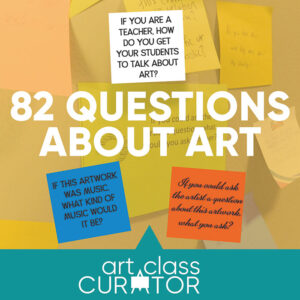
Free Resource!
82 Questions About Art
82 questions you can use to start and extend conversations about works of art with your classroom. Free download includes a list plus individual question cards perfect for laminating!
Subscribe and Review in iTunes
Have you subscribed to the podcast? I don’t want you to miss an episode and we have a lot of good topics and guests coming up! Click here to subscribe on iTunes!
If you are feeling extra kind, I would LOVE it if you left us a review on iTunes too! These reviews help others find the podcast and I truly love reading your feedback. You can click here to review and select “Write a Review” and let me know what you love best about the podcast!


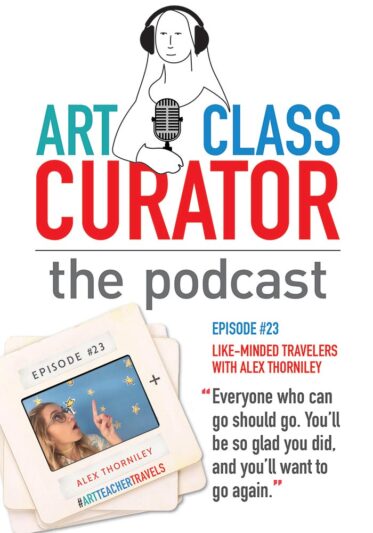
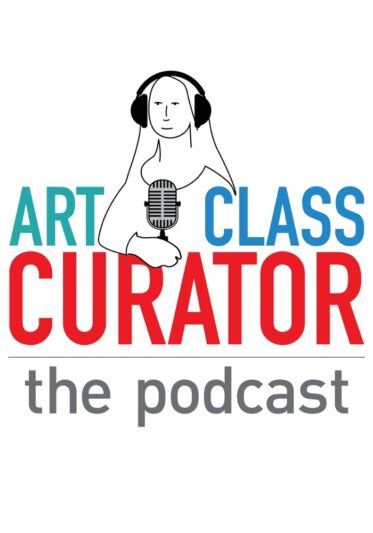
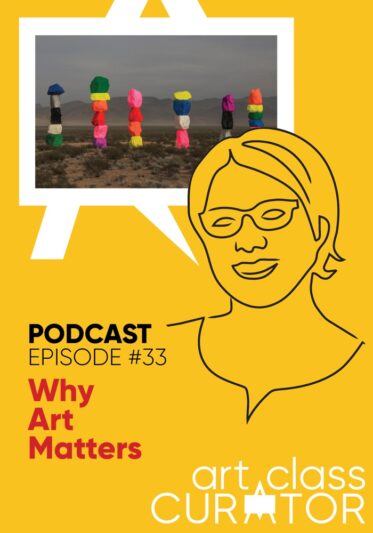
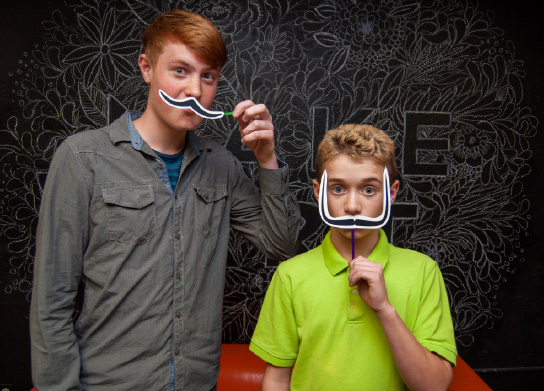
Leave a Comment